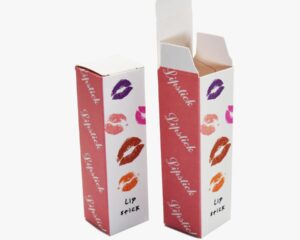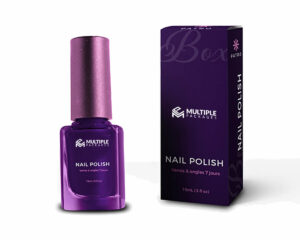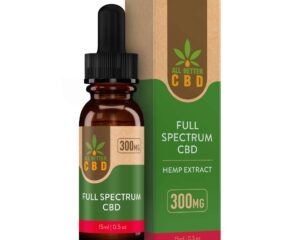In the modern marketplace, packaging design serves as a brand’s first impression, making it an essential part of any successful product strategy. For companies like Packwhole, which specialize in innovative packaging solutions, understanding and implementing the core elements of effective packaging design can be the difference between a product that captures the consumer’s attention and one that fades into the background. In this article, we’ll explore the six fundamental elements of effective packaging design that can help your product stand out, build brand loyalty, and drive sales.
1. Simplicity and Clarity
One of the most critical aspects of packaging design is simplicity. The packaging should convey the product’s purpose and value in a way that is straightforward and instantly recognizable. When consumers encounter a product, they should immediately understand its function and how it can benefit them without having to decipher complex messaging or visuals.
- Benefits of Simple Design: Clean, simple designs are easy for the consumer to process quickly, making it easier for them to decide on a purchase.
- Implementing Clarity: Use clear labeling, straightforward imagery, and avoid overcrowding the design with excessive text or graphics. Brands like Apple are known for their minimalist packaging, which conveys sophistication and clarity in just a glance.
2. Brand Identity
Packaging design should reflect your brand’s identity and values. Every element, from colors and fonts to logos and slogans, should be consistent with the brand message and communicate a cohesive story. This creates a sense of familiarity and trust with consumers.
- Visual Consistency: Use brand colors, typography, and logo placement consistently across all packaging. This will help customers instantly recognize your products on shelves or online.
- Storytelling: Incorporate brand narratives through design elements. For example, eco-conscious brands may use earthy tones and biodegradable materials to emphasize their commitment to sustainability. Packwhole assists brands in creating packaging that tells their story effectively and resonates with their target audience.
3. Functionality and Practicality
Packaging should be designed with the end-user in mind, prioritizing functionality and convenience. Effective packaging isn’t just about aesthetics; it must also be practical, protecting the product during transport and storage, and offering a user-friendly experience.
- Protective Design: Materials and structures should ensure the product remains intact and safe. This is particularly vital for fragile items, food products, and anything prone to spoilage or breakage.
- Ease of Use: Design packaging with features that enhance usability. Examples include resealable pouches, tear notches, and ergonomic grips. Packwhole helps brands choose the right packaging solutions to balance design with practicality.
4. Sustainability
Sustainability is no longer a niche demand but an expectation among modern consumers. Environmentally conscious packaging not only appeals to eco-friendly customers but also demonstrates corporate responsibility. Sustainable packaging design includes using recyclable, compostable, or biodegradable materials and minimizing waste.
- Eco-Friendly Materials: Consider biodegradable plastics, recycled paper, or sustainable alternatives like bamboo and glass.
- Minimalist Packaging: Reducing packaging materials can also lessen environmental impact and appeal to consumers looking for waste-reduced products.
- Packwhole’s Commitment: Packwhole provides solutions that focus on eco-friendly materials and innovative designs that help brands meet their sustainability goals.
5. Shelf Impact
In retail environments, products are often displayed alongside hundreds of other similar items, making shelf impact a crucial element of packaging design. A package that stands out visually is more likely to capture a shopper’s attention, prompting them to consider it over competing products.
- Visual Standout: Use colors, unique shapes, and captivating images to grab attention. High-quality visuals and bold designs can make a significant difference in how a product is perceived on the shelf.
- Packwhole’s Approach: With expertise in creating visually compelling designs, Packwhole works with brands to maximize shelf appeal through innovative packaging structures and vibrant, eye-catching graphics.
6. Legal Compliance and Informational Content
Packaging is not only about aesthetics and brand identity; it must also adhere to industry regulations and provide essential information for consumers. Effective packaging should include nutritional information, ingredients, warnings, and other relevant details that comply with legal standards.
- Clear Labeling Requirements: Depending on the product type and region, packaging must meet specific regulatory requirements. This includes ingredients lists, weight, expiration dates, and other necessary consumer information.
- Packwhole’s Support for Compliance: Packwhole helps brands navigate the complex regulatory landscape, ensuring that all necessary information is included on the packaging without compromising on design.
Conclusion: The Packwhole Difference
Effective packaging design is an art and science that combines aesthetic appeal with functional and strategic thinking. By focusing on simplicity, brand identity, functionality, sustainability, shelf impact, and compliance, brands can create packaging that not only attracts but also retains customers. For companies looking to refine their packaging approach, Packwhole provides end-to-end solutions, from conceptual design to execution, ensuring that each product’s packaging aligns with these six fundamental elements.
Investing in these aspects of packaging design can drive long-term success by building brand recognition, enhancing user experience, and fostering customer loyalty. Whether you’re launching a new product or looking to revamp existing packaging, consider these elements to elevate your brand’s market presence.







